Professional drivers have what can be a thankless career, with many of us taking them for granted. Do you enjoy going to a well-stocked grocery store, mall or small shop? How about receiving packages that you ordered online? These are all thanks to the truck drivers out there. They have a very challenging job and they also have to deal with oblivious drivers.
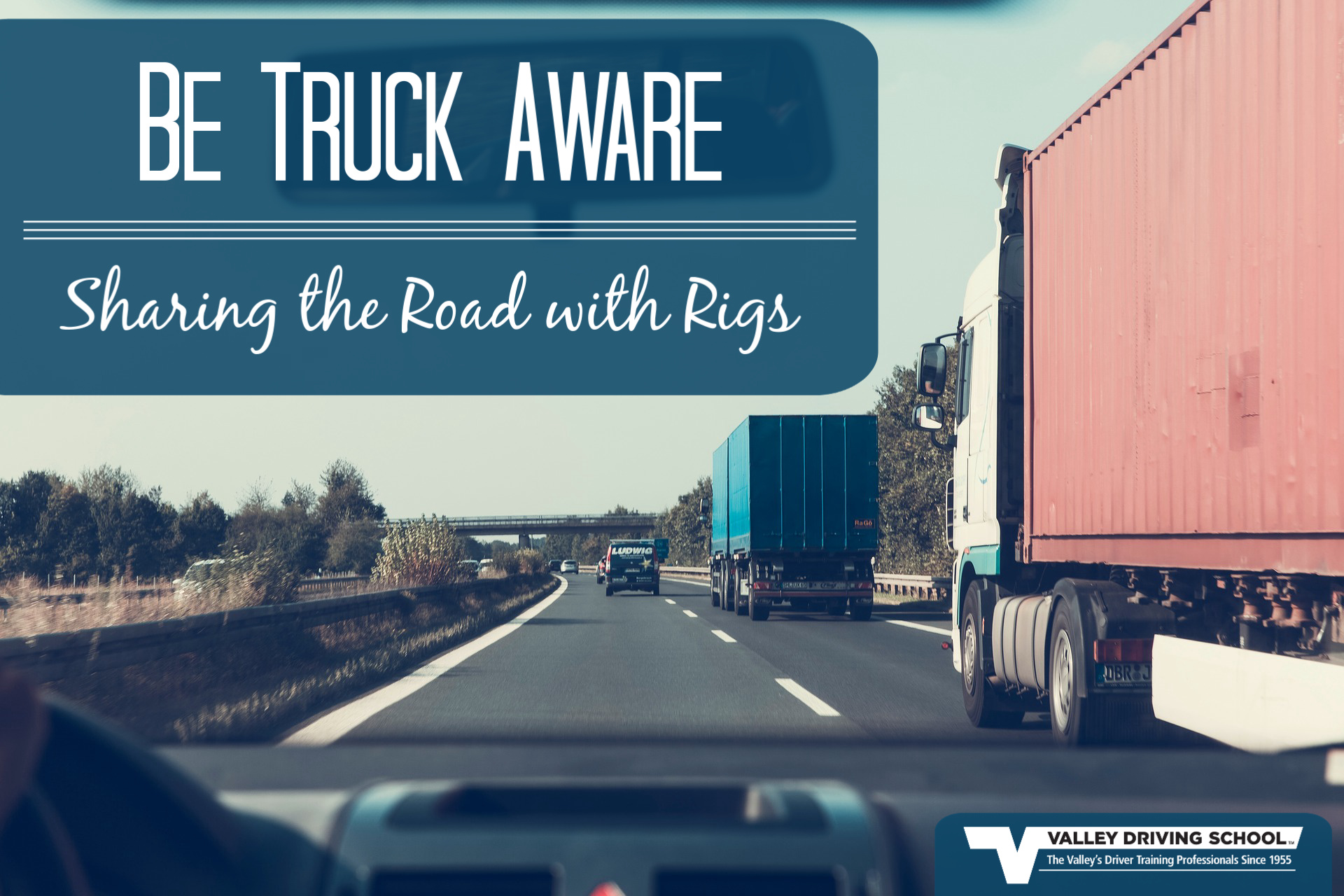
Sharing the road with semi-trucks and trailers can be a challenging aspect of driving. They’re massive, loud, powerful, and have a big presence. Aside from their physical stature, they can also be intimidating to drive. Semi-trucks have large and complex blind spots, intricate transmissions (up to 18 gears!) and drivetrains and must deal with the same challenging road conditions as small cars. Being truck aware is an important part of driving on roadways and when travelling major highways at higher speeds much the same as sharing the road with motorcycles.
In this post, we’ll discuss the important aspects of sharing the road with big rigs and how to be truck aware - making our roadway a better and happier place to be.
Semi-Trucks & Blind Spots
Semi-trucks have large blind-spots around their vehicle due to their size and vehicle configuration. Being truck aware means understanding where the blind spots are and how to minimize time spent travelling in those blind spots.
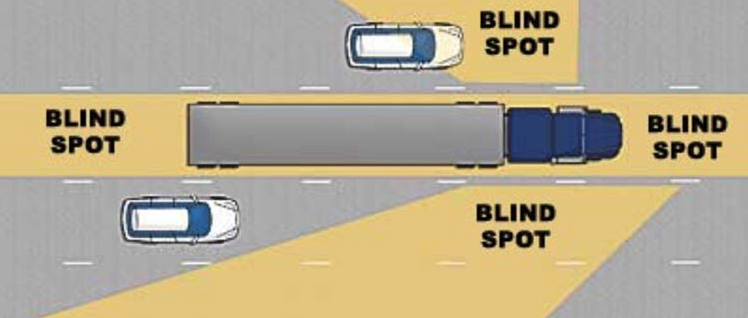
As you can see, semi-trucks have larger blind spots on the right side, which means that any attempts to pass these vehicles should always be done on the left. Changing lanes into a drivers’ blind spot should also be avoided if you can. A good rule of thumb is that if you cannot see the drivers’ face in their side mirror, they cannot see you. Keep this in mind when driving in a lane directly beside a semi-truck.
If you are thinking of attempting a lane change or pass, watch for the trucks potential maneuvers – are there any turn signals flashing, indicating they are going to be turning or changing lanes? If a truck is attempting a maneuver, you can easily be caught up in a newly created blind spot. If you are coming to the end of your pass, be sure that you can see the entire front of the truck in your rear-view mirror before pulling in front of it.
When travelling with these big vehicles, you should always maintain a healthy following distance behind them. If you are travelling between 50 and 70 kilometers per hour, maintain at least a 2-3 second following distance. Increasing this speed to 80 kilometers or more should also result in increasing your following distance to 4 or more seconds. The larger your following distance, the better you will be able to see around the large vehicle!
Off-Tracking & Right Turns
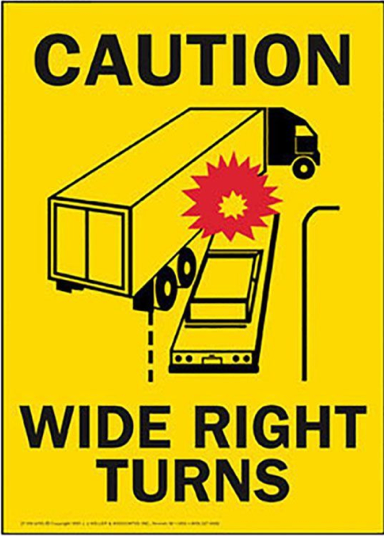 A standard length for a trailer is 53 feet (16.1 meters). When paired with a tractor unit, these combination vehicles average about 75 feet (22.8 meters) in length!
A standard length for a trailer is 53 feet (16.1 meters). When paired with a tractor unit, these combination vehicles average about 75 feet (22.8 meters) in length!
Large vehicles require a lot of room to turn; in fact, the average semi-truck and trailer can require up to 5 lanes to complete a basic right turn. This is due to Off-Tracking. Off-Tracking is when the front tires follow a different path than the back tires.
Truck drivers will set up at intersections to account for Off-Tracking. If you see a truck in the left lane with a right turn signal on, they may actually be turning right. This set-up is required for them to gain the space they need. Avoid driving up along the right side of a semi-truck if there is a chance the truck may be turning right. Remember that truck drivers have a large blind spot on their right sides!
Right Turn Procedure
- When making a right turn, the driver will start in both lane positions 1 and 2.
- Depending on the intersections’ size and angle, the driver may take space from lane position 5.
- As the turn is completed, the tractor will take lane position 4 and the trailer will follow in lane position 3.
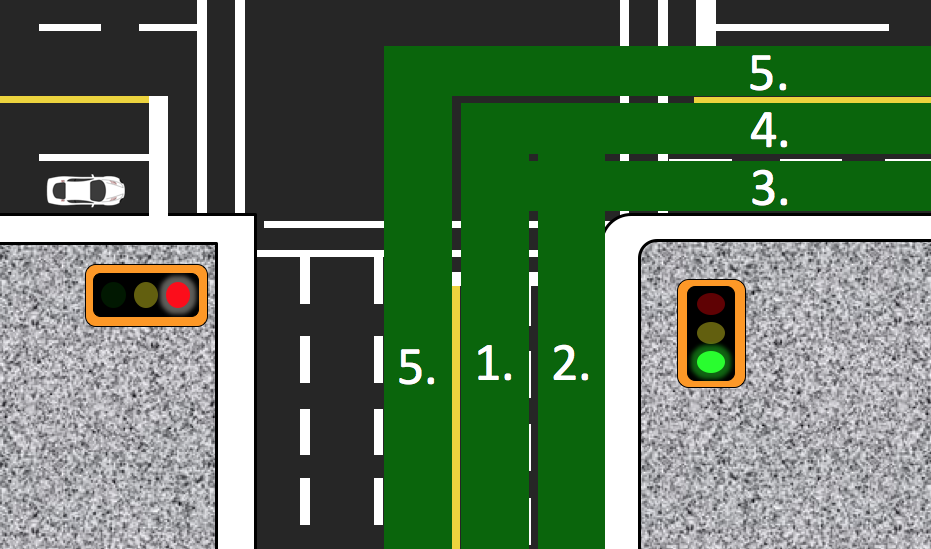
It would look something like this:
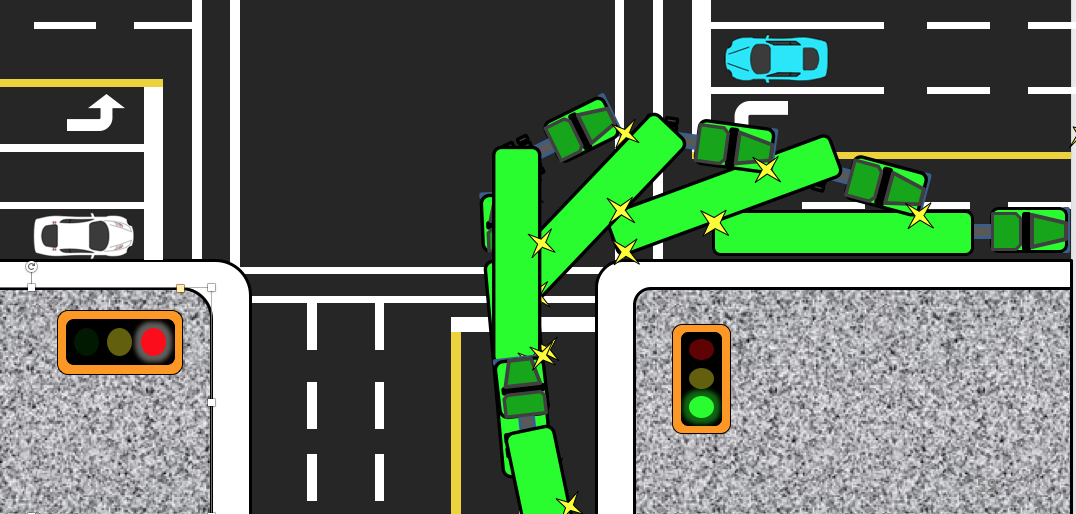
Communication
Professional drives have many ways to communicate and it may be slightly different than passenger vehicles. Drivers will put their signal on first when they want to make a lane change, in hopes that other drivers will create space for them. As we mentioned above, truck drivers may have their right signal on and be in the left lane to turn right. Don’t drive up alongside them! Drivers will use their hazard lights/four-way flashers as a warning to other drivers. These will often be used when travelling below the speed limit or when alerting other drivers of congestion ahead. Drivers will also make use of their horns; most often when they are performing backing maneuvers.
Both passenger vehicle drivers and professional trucks need to ensure we are communicating appropriately with other road users. Accidents happen when miscommunication or no communication occurs!
Truck Signs
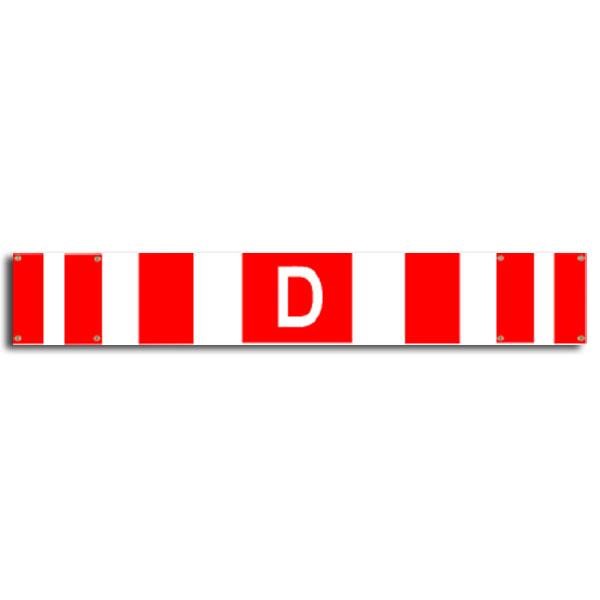
Large trucks will sometimes have signage to help inform and alert other road users. An orange triangle with a red border indicates that a vehicle will be travelling at less than 40 km/h. This sign will usually be displayed on the back of some farm vehicles or semi-trucks that are travelling on quieter roads.
The red and white striped sign indicates an oversize load. This sign can be located on a pilot car travelling ahead or behind the semi-truck, as well as or in addition to being displayed on the semi-truck itself. You’ll want to be extra cautious when following this vehicle or attempting to pass.
Being truck aware is an important aspect of everyday driving. Road users should be aware and diligent every time we get in the drivers’ seat. Sharing the road with big rigs is a complex topic that demands respect. We can safely coexist on our roadways, but it takes patience, respect, and knowledge to interact successfully.
